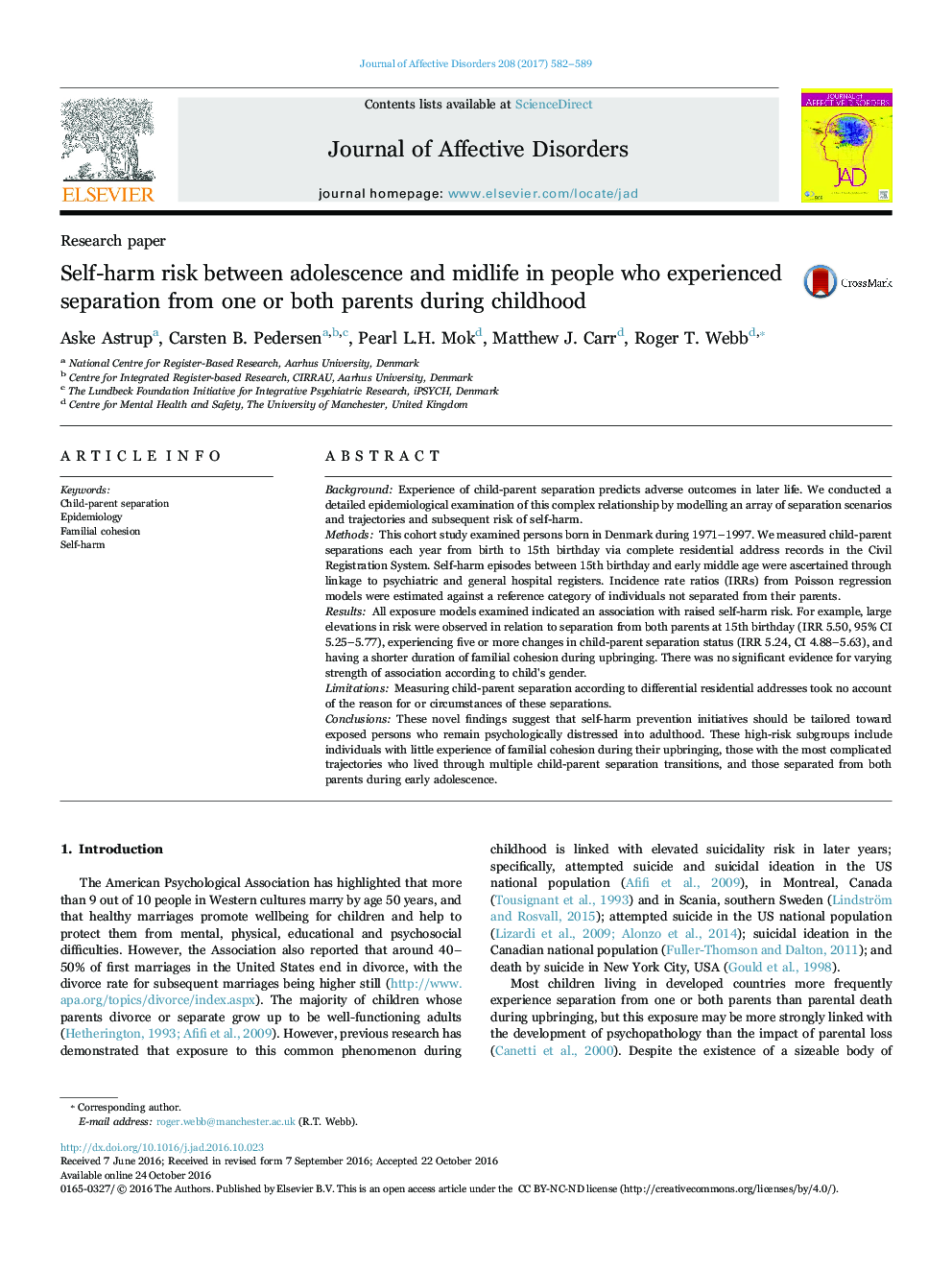| Article ID | Journal | Published Year | Pages | File Type |
|---|---|---|---|---|
| 5722130 | Journal of Affective Disorders | 2017 | 8 Pages |
â¢All parental separation exposure models examined indicated raised self-harm riskâ¢Strength of association did not vary according to child's genderâ¢Separation from both parents, and in adolescence, predicated large risk elevationsâ¢Risk was raised even for individuals reunited with both parents by their 15th birthday
BackgroundExperience of child-parent separation predicts adverse outcomes in later life. We conducted a detailed epidemiological examination of this complex relationship by modelling an array of separation scenarios and trajectories and subsequent risk of self-harm.MethodsThis cohort study examined persons born in Denmark during 1971-1997. We measured child-parent separations each year from birth to 15th birthday via complete residential address records in the Civil Registration System. Self-harm episodes between 15th birthday and early middle age were ascertained through linkage to psychiatric and general hospital registers. Incidence rate ratios (IRRs) from Poisson regression models were estimated against a reference category of individuals not separated from their parents.ResultsAll exposure models examined indicated an association with raised self-harm risk. For example, large elevations in risk were observed in relation to separation from both parents at 15th birthday (IRR 5.50, 95% CI 5.25-5.77), experiencing five or more changes in child-parent separation status (IRR 5.24, CI 4.88-5.63), and having a shorter duration of familial cohesion during upbringing. There was no significant evidence for varying strength of association according to child's gender.LimitationsMeasuring child-parent separation according to differential residential addresses took no account of the reason for or circumstances of these separations.ConclusionsThese novel findings suggest that self-harm prevention initiatives should be tailored toward exposed persons who remain psychologically distressed into adulthood. These high-risk subgroups include individuals with little experience of familial cohesion during their upbringing, those with the most complicated trajectories who lived through multiple child-parent separation transitions, and those separated from both parents during early adolescence.
